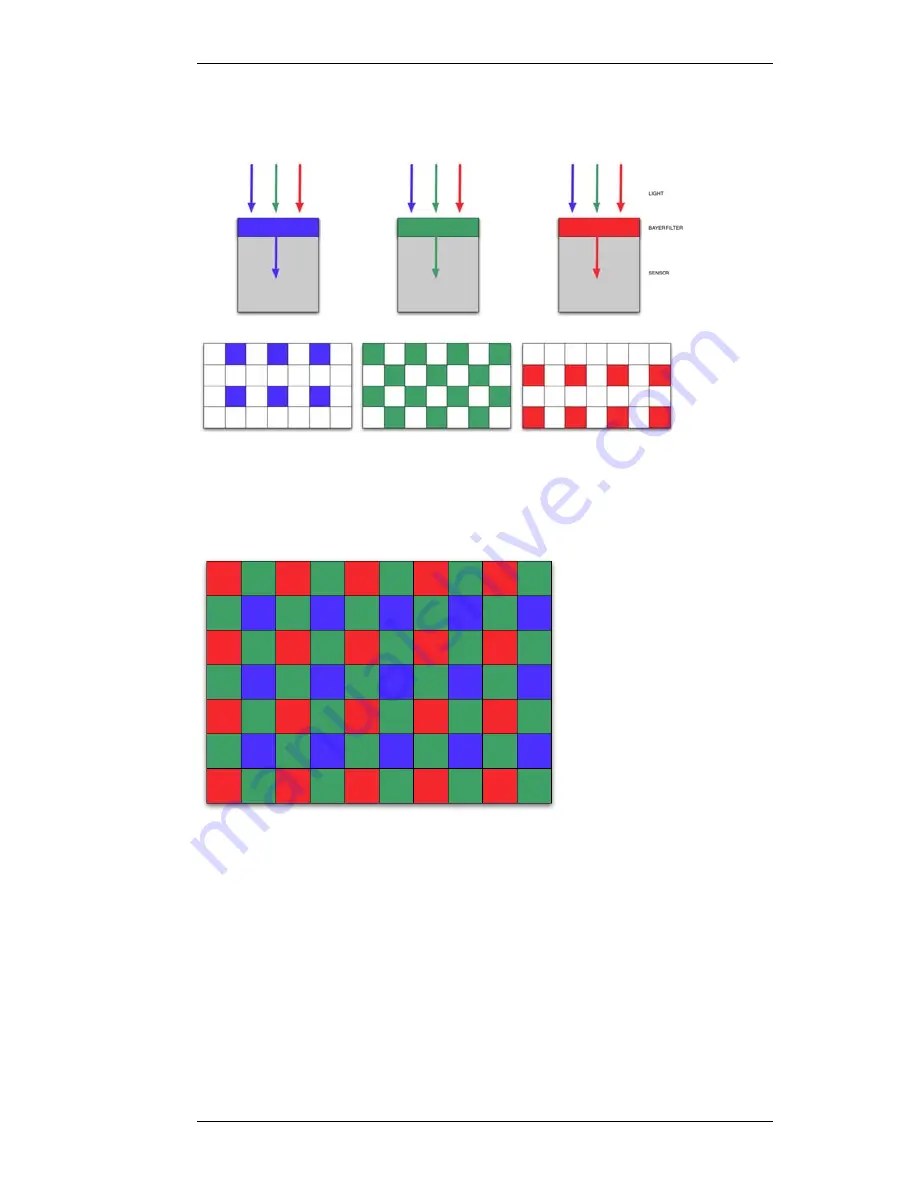
V1.02
Thom Hogan’s Complete Guide to the Nikon D300
Page 54
over it so that the underlying photosite is responsive to a
particular range of color:
Adjacent photosites have different colored filters over them,
which produces an alternating array of colored filters. Here’s
a close view of a small portion:
Basically, odd-numbered pixel rows alternate filters to
produce red and green values, while even-numbered pixel
rows alternate filters to produce green and blue. It’s very
important for D300 users to understand what this pattern
does, and the consequences it produces in images.
Many first-time digital users wonder why the green filter is
used for twice as many photosites as the blue and red filters.
One reason is that photodiodes, like our eyes, are most
receptive to light wavelengths in the 500 to 600 nanometer
















































